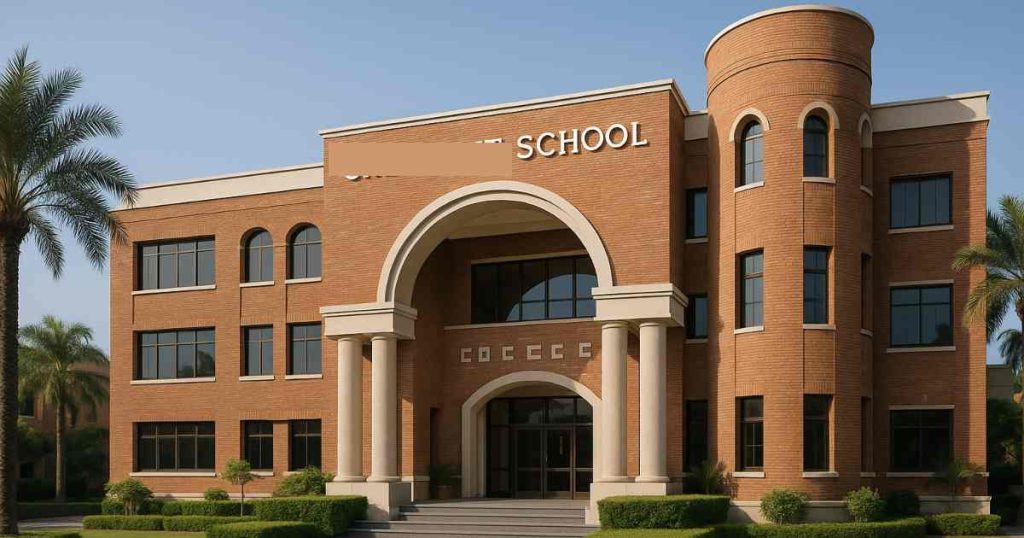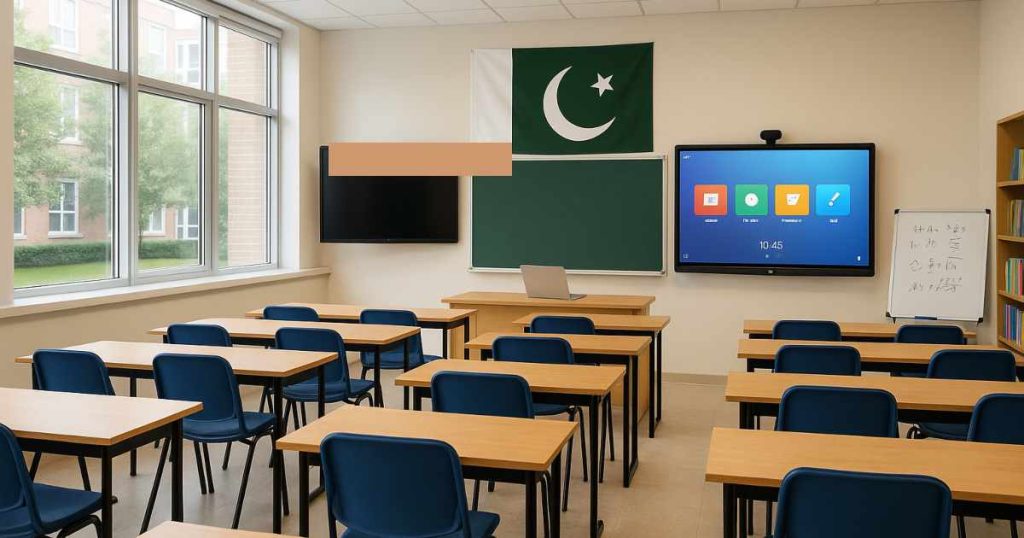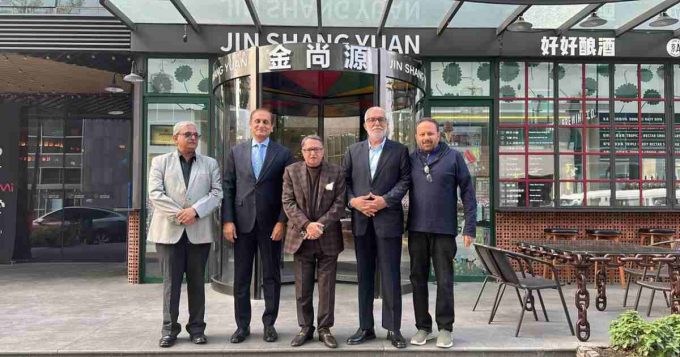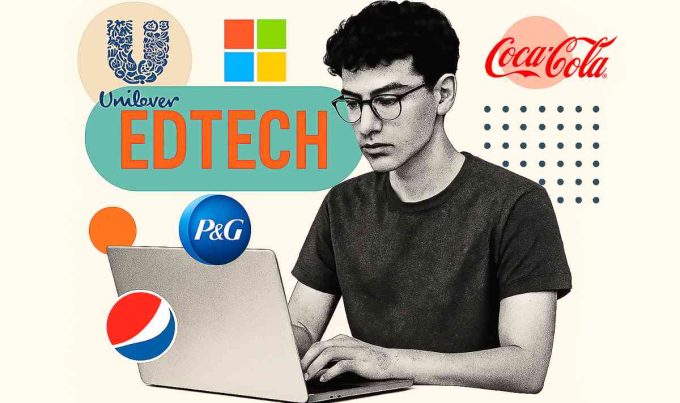In the mists of time, education was once seen as a noble pursuit, meant to enlighten, uplift, and empower. In Pakistan today, it is a full-fledged business. The curriculum is no longer about education; it is a gamble in profit maximisation. In an age of curriculum capitalism, dominated by social privilege and vested interests that dictate the kind of future our children inherit.
Walk into any elite school in Pakistan, and you will find textbooks that look more like luxury catalogues than learning tools, rebranded every five to six years, and with only slight updates and double pricing. Educational publishers have transformed textbooks into proprietary content. In some cases, textbook monopolies leave parents with no choice but to cough up thousands each term. According to an estimate, a typical middle-class urban Pakistani family spends 20-30% of their income on education. The third biggest expense in the domestic budget is after rent and food.
The main tragedy is that, despite such inflated fees and costs, there is no guarantee of quality education or content. When a parent pays such incredibly hefty fees, they expect the child to benefit from it. However, with limited knowledge, the child becomes distracted by back-to-back activities and ends up memorising material rather than truly learning it.
The opportunity cost of profit maximisation in education becomes knowledge and awareness of our youth. When only the affluent can access education, especially in a country where nearly 45% of the population lives in poverty (as reported by the World Bank), it creates dire long-term consequences. An uneducated majority means a weaker economy and a future without promise.

The classroom has become a showroom. It’s driven by money-minded educationalists sipping tea in their ‘fancy’ state-of-the-art campuses—built from the sweat, tears, and, of course, the money of parents they wouldn’t even want to sit beside. They decide which child deserves an education based on how well the parents can reward them (“the educator”) with yet another trip to Europe.
However, it is also true that some institutions are still true to their values of social welfare. Especially at professional and higher degree-level where many public institutions are still working efficiently to reduce the gap. Yet, this does nothing for the quality gap at the earlier stages of education that shapes the minds and sets people apart for the sake of profiting from them.
The Rise of Foreign Boards
Why are parents so desperate for a ‘Cambridge’ or ‘IB’ education? It is not just about academics; it is about class signalling. In Pakistan, to say your child is doing ‘O Levels’ is not just a curriculum choice; it is a status announcement. Matric is for the masses, Cambridge is for the crème.
The foreign boards understand this very well and skyrocket their fees more and more each year, knowing that households and parents will comply irrespective of economic strain at home.
This desperation has also thrown up a new class of tycoons with the financial muscle to create ripples in other sectors. This has resulted in elite schools now actively discouraging Matric streams. ChatGPT said:
They are viewed as a step down, despite being the backbone of the national education system that was meant to be a source of pride. Now only a reason for us to look down on ourselves and our system. It paid the price of our quota system and greed that believes in the selling of papers rather than sustainable, merit-based results.
Consequently, Pakistan’s education landscape has evolved into a segregated hierarchy. Where curricula serve less as frameworks for learning and more as markers of privilege. However, it is also true that it’s not everyone’s fault.
Not many opt for or admire a foreign educational board without reasoning. There is no doubt that certain factors of our local boards have gone corrupt and require better scrutiny. As well as the curriculum needs to be more inclusive and updated, allowing ordinary civilian to gain education on their own merit. At the end of the day, whatever they learn is equally comparable to the education outside. When the quality of education increases, recognition will come on its own.
Even as we speak, the government is acknowledging this divide with the introduction of the Single National Curriculum (SNC), an attempt to bridge the gap. However, the SNC is often implemented more rigorously in public schools than private ones, keeping the class divide alive. Around 17 million students (37% of the total) attend 87,659 private education institutions in Pakistan. These figures reveal that unless reform addresses structural inequities. The SNC will remain a symbolic gesture rather than a transformative policy.

Private Schools: Education, Inc.
Ah yes, Private school monopolies that sell their campuses like lifestyle choices: “State-of-the-art labs,” “British-trained faculty,” “International exposure,” and other words that attract students who walk right into the trap of distraction. Today, a child’s enrolment form might read more like a marketing survey than an academic evaluation. The content is tailored to sell, not teach.
Parents are not just choosing syllabi; they are buying into ideologies of elitism. With fee that often rival university cost abroad. These schools offer educational experiences packaged like luxury services. And behind the curtain? Often, it is a ruthless chase for higher profit margins and blood money. A race to see who can drain more soul out of these bright students and their parents. The winner will get to cry about the corrupt educational system they built themselves.
Yes, not all is black and white. The private education sector has also worked in giving us quality education that is respected globally. However, the only question is: shouldn’t this quality education be an equal right for all? Shouldn’t an educational institute first believe in merit-based admissions rather than fee-based?

The Politics of Curriculum
Behind every syllabus is a set of power structures: political, ideological, and economic. In Pakistan, politicians, bureaucrats, and international donors steer curriculum decisions rather than educators. They mould and often censor the content to fit whichever narrative best serves those in power—religious, nationalist, or neoliberal.
For instance, history textbooks may gloss over inconvenient truths or push a certain ideology. Science education might shy away from critical thinking, favouring rote memorisation. Language policies shift based on political tides. Should children learn in English, Urdu, or regional languages? The answer depends less on pedagogy and more on who has the power and who is funding them. Oh, and whatever helps them remain unaware, too.
The byproduct of this curriculum capitalism is an education system that perpetuates inequality. A Cambridge school in Karachi prepares a child for an entirely different world than the one a government school in Larkana prepares them for. The curriculum, which should unify and uplift, now divides and stratifies.
It is not just about money at its core. The feudal lords will send their children to study abroad, and the more privileged commoners will go to foreign countries that offer free education and then settle there. Our potential gets exported, and other nations utilise it while we take them for granted. Meanwhile, the feudal children return home with their Oxford degrees and suppress the people left behind, stomping on their dead carcasses while their screams go unheard.
And this is not an accident; this is how the system is designed. The monetisation of education ensures that the best tools, resources, and curricula remain accessible only to those who can pay for them. While the others can be erased.










